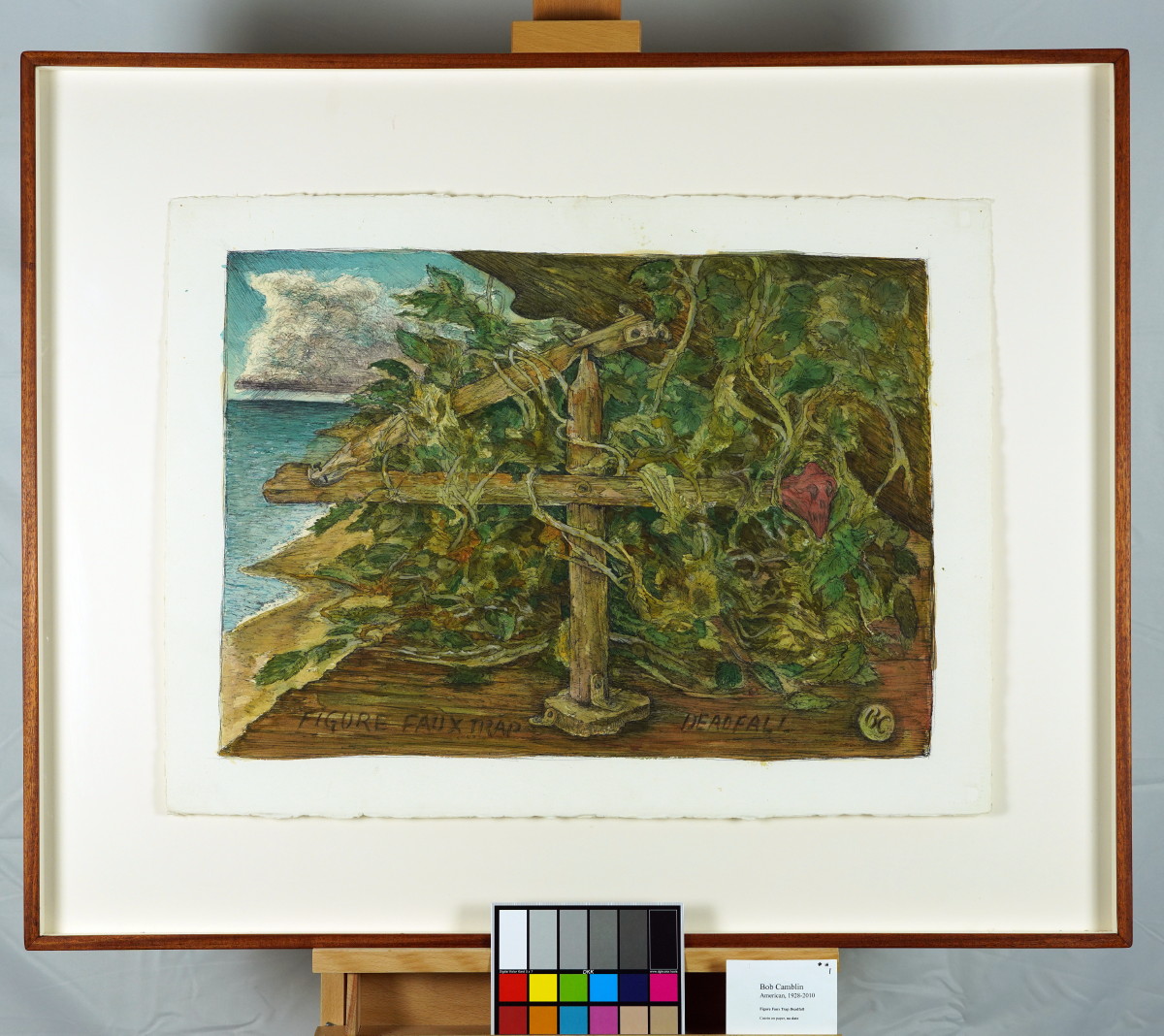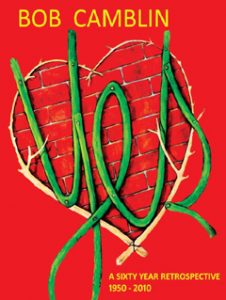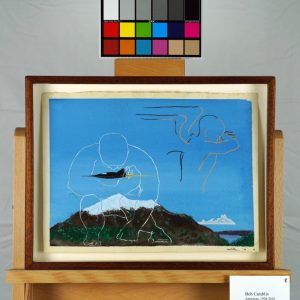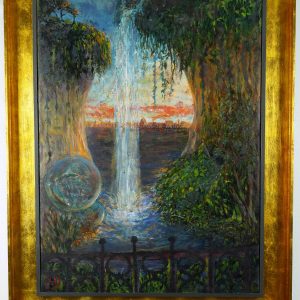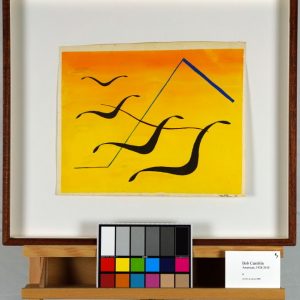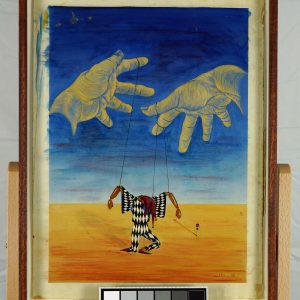Description
Figure Faux Trap Deadfall, no datecasein on Arches watercolor paper
Signed BC (what’s the reason for this?)
18 x 25.5 in. (image)
32.5 x 40 in. (frame)
original, includes certificate of authenticity
The watercolor “Figure Faux Trap Deadfall” depicts an intricate and overgrown structure resembling a deadfall trap. The composition features wooden beams bound together, covered in dense foliage, vines, and leaves. A heart-shaped object on the deadfall adds a touch of mystery. The scene’s setting appears to be near a coastline, with the ocean visible in the distance. The earthy and green hues dominate the palette, creating a natural and somewhat melancholic tone.
From a Zen perspective, the image symbolizes the tension between nature’s untamed beauty and human intervention. The constructed deadfall represents humanity’s desire to control or manipulate nature, while the encroaching vines signify nature’s resilience and the inevitable return to balance. In Zen thought, this can be a meditation on attachment and the pitfalls of imposing one’s will upon the world. The presence of the heart shape may hint at the emotional traps or illusions (or a skull perhaps) that one must overcome to achieve enlightenment.
The I Ching hexagram that resonates with this piece could be Hexagram 23, “Splitting Apart.” This hexagram signifies a time when things are falling apart or decaying, suggesting that transformation or renewal is needed. The deadfall trap in the image echoes this theme, as it appears to be an apparatus meant to ensnare or collapse. In the context of the I Ching, the work might speak to the necessity of letting go, dismantling what no longer serves its purpose, and allowing space for new growth.
Combining the Zen and I Ching readings, this artwork can be interpreted as a reflection on the cyclical nature of life—where decay and renewal are part of the same process. The trap is both a symbol of entrapment and a tool for release; it depends on one’s perspective. The natural elements reclaiming the structure suggest that what is rigid and human-made will eventually succumb to the forces of time, urging the viewer to live in harmony with the natural flow of existence.
Stylistically, the piece could be connected to Symbolism or Naturalism, with its emphasis on the emotional content and detailed depiction of natural forms. The technique of intertwining the organic elements with human constructions can be traced back to the works of artists like Jean-Baptiste-Camille Corot, who often depicted scenes of nature overcoming ruins, or Samuel Palmer, who infused natural landscapes with symbolic depth. The use of line and texture here emphasizes the contrast between nature’s irregularity and human-made structures
*Shipping cost will vary, please inquire at sales@camblingallery before purchasing.
Currently ships from Oregon, USA
Member of artnet? Apply for a discount! Inquire about intergallery and permanent loans for museums.
“Figure Faux Trap Deadfall” was featured in his Yes Retrospective and in volume II of the series Bob Camblin N Complete Workes.
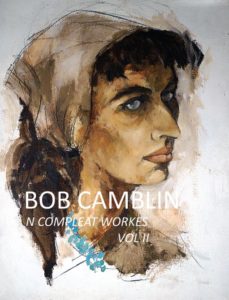
Reproductions of this drawing are available in multiple sizes!
Click here to use our high-resolution viewer!
This artwork is available with a non-fungible token to ensure traceability and transparency of provenance.
The royalty factor – Unlike traditional artworks, such as paintings, mosaics, statues, and the like, NFTs can be programmed to provide royalties to you every time the painting (and token) is sold and resold – for eternity. That mind-bending Camblin you sold could be worth millions one day and provide income for your great-great-great grandkids!
Anti-forgery – The central idea underpinning NFTs is that they are built on the blockchain, which is meant to offer advanced security. Think of it like an un-erasable and un-avoidable copyright.
Easy authentication – Another compelling aspect of NFT art and NFTs in general is the ability to quickly and easily authenticate items, as the record of ownership is scrupulously kept on the blockchain.
